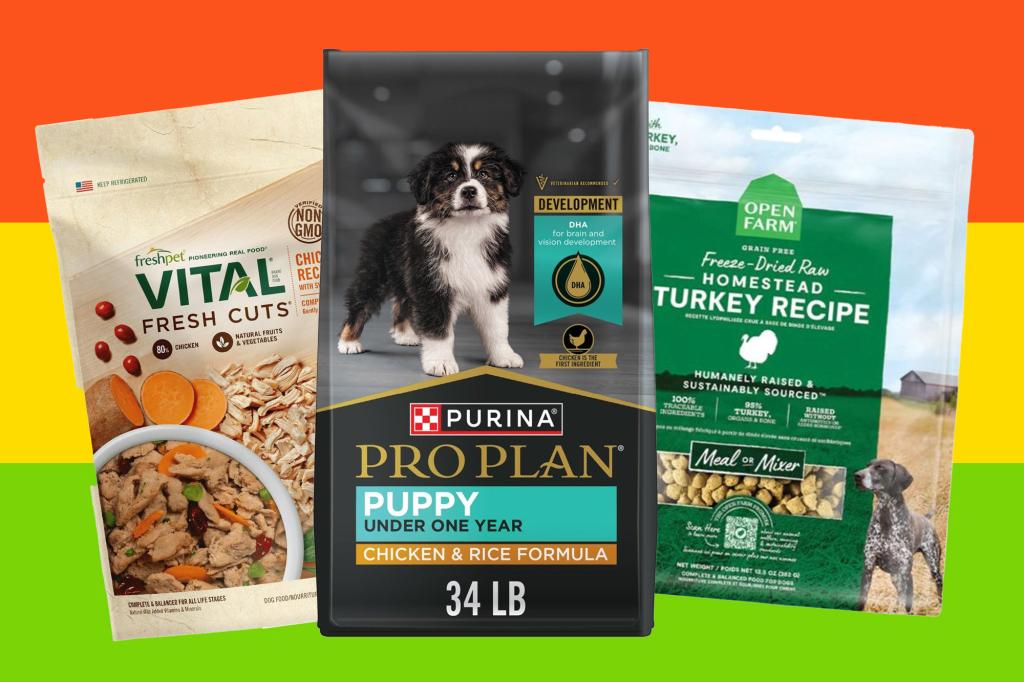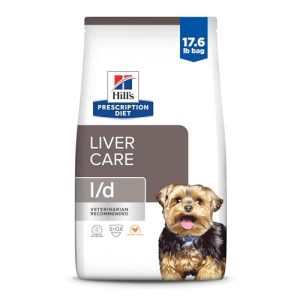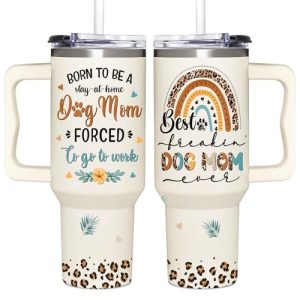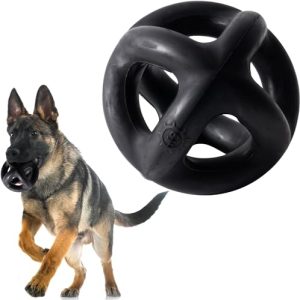Choosing the right food for your adult dog can feel like navigating a maze. With countless brands lining the shelves, each promising to be the best, how do you know which one truly meets your furry friend’s needs?
Your choice can significantly impact your dog’s health, happiness, and even longevity. Imagine providing meals that not only satisfy hunger but also boost energy levels and keep that tail wagging. This guide will help you cut through the clutter and focus on what truly matters.
By the end, you’ll have the confidence to pick a dog food brand that supports your pet’s vibrant life. Are you ready to discover how to make the best choice for your beloved companion? Let’s dive in!
Credit: www.businessinsider.com
Key Nutrients For Adult Dogs
Adult dogs need balanced nutrition to stay healthy. Choosing the right dog food means knowing which nutrients are important.
This guide covers the key nutrients your dog needs every day for good health and energy.
Proteins And Amino Acids
Proteins give dogs energy and help build muscles. Amino acids are the building blocks of protein. Dogs need essential amino acids from their food because their bodies cannot make them.
Good sources include meat, fish, eggs, and some plants. Look for dog foods with high-quality protein to support your dog’s health.
Fats And Fatty Acids
Fats provide energy and help keep skin and coat healthy. Fatty acids like Omega-3 and Omega-6 support brain and joint health.
- Omega-3 helps reduce inflammation
- Omega-6 supports skin health
- Fats help absorb vitamins
- Healthy fats improve energy levels
Carbohydrates And Fiber
Carbohydrates give dogs quick energy. Fiber helps digestion and keeps the stomach healthy. Whole grains and vegetables are good fiber sources.
| Nutrient | Role | Sources |
| Carbohydrates | Energy | Rice, barley, oats |
| Fiber | Digestion | Vegetables, beet pulp |
Vitamins And Minerals
Vitamins and minerals keep your dog’s body working well. They support bones, teeth, immune system, and blood health.
- Vitamin A – good for eyes and skin
- Vitamin D – helps bones absorb calcium
- Calcium and Phosphorus – build strong bones
- Iron – supports healthy blood
- Zinc – helps the immune system
Reading Dog Food Labels
Choosing the right food for your adult dog starts with reading the label. Labels show what is inside the food. They help you find healthy options for your dog.
Understanding the label can be tricky. This guide explains key parts of dog food labels. You will learn how to read ingredients, nutrition facts, and claims.
Ingredient List Insights
The ingredient list tells you what is in the dog food. Ingredients are listed by weight, from most to least. The first few ingredients matter most.
Look for real meat or meat meals at the top. Avoid foods with too many fillers like corn or wheat. Whole foods like vegetables and fruits add good nutrients.
- First ingredients should be named meats (chicken, beef)
- Avoid vague terms like “meat by-products”
- Grains like rice or oats are okay in small amounts
- Watch for added sugars or artificial ingredients
Guaranteed Analysis Explained
The guaranteed analysis shows nutrient percentages in the food. It lists protein, fat, fiber, and moisture. These numbers help you compare foods.
Adult dogs need enough protein and fat for energy and health. Fiber supports digestion. Moisture shows how much water is in the food.
| Nutrient | Purpose | Typical Range for Adult Dog Food |
|---|---|---|
| Protein | Builds muscles and tissues | 18% to 30% |
| Fat | Energy source and skin health | 8% to 20% |
| Fiber | Supports digestion | 2% to 5% |
| Moisture | Water content in food | 10% to 12% |
Understanding Food Claims
Dog food labels often have claims like “natural” or “grain-free.” These claims can be confusing. Some have strict rules, others do not.
Look for claims backed by standards. “Complete and balanced” means the food meets dog nutrition needs. “AAFCO approved” shows it passes feeding tests.
- “Natural” means no artificial colors or preservatives
- “Grain-free” means no wheat, corn, or rice
- “Complete and balanced” meets nutrient standards
- “AAFCO statement” means tested for nutrition
Types Of Dog Food
Choosing the right dog food is important for your pet’s health. Different types of food offer various benefits. Knowing these can help you pick the best option.
Dog food comes in many forms. Each type has unique features that suit different dogs and lifestyles.
Dry Kibble Benefits
Dry kibble is a popular choice for many dog owners. It is easy to store and has a long shelf life. Kibble also helps keep your dog’s teeth clean by reducing plaque build-up.
- Affordable and widely available
- Easy to measure and serve
- Helps maintain dental health
- Less messy than wet food
Wet Food Advantages
Wet food contains more moisture than dry kibble. This helps keep your dog hydrated. It also tends to be more flavorful and easier to chew, which is good for older dogs.
| Benefit | Details |
| Higher moisture | Supports hydration and urinary health |
| Better taste | More appealing for picky eaters |
| Soft texture | Easier for dogs with dental issues |
| Shorter shelf life | Must be used quickly after opening |
Raw And Freeze-dried Options
Raw and freeze-dried foods aim to provide a natural diet. Raw food is fresh or frozen meat and organs. Freeze-dried food removes water but keeps nutrients.
These options offer:
- High protein content
- Minimal processing
- Closer to a natural diet
- Requires careful handling for safety

Credit: www.hillspet.com
Tailoring Food To Your Dog’s Needs
Choosing the right food for your adult dog is important for their health. Different dogs need different nutrients based on many factors.
Knowing your dog’s specific needs helps you pick a food that supports their life and keeps them happy.
Breed And Size Considerations
Large and small dog breeds have different dietary needs. Size affects how much food they need and the type of nutrients.
Small breeds often need food with more calories per bite. Large breeds need food that supports joint health and slower growth.
- Small breeds: higher calorie density, smaller kibble size
- Large breeds: nutrients for bones and joints, controlled calories
- Medium breeds: balanced nutrients for moderate size and activity
Age And Activity Levels
Adult dogs have different needs depending on their age and how active they are. Older dogs need fewer calories but more joint support.
Active dogs burn more energy and need food with more protein and fat. Less active dogs need lower calorie food to avoid weight gain.
- Young adults: balanced protein and fat for energy
- Senior dogs: lower calories, more fiber, joint support
- High activity: higher protein and fat for energy
- Low activity: fewer calories to prevent weight gain
Health Conditions And Allergies
Health issues can change what food your dog needs. Some dogs have allergies or conditions that require special diets.
Talk to your vet if your dog has allergies, digestive problems, or other health issues. They can recommend the best food type.
- Allergies: avoid common allergens like wheat, soy, or chicken
- Digestive problems: choose easily digestible ingredients
- Weight management: low fat and controlled calories
- Kidney or heart disease: special nutrient balance advised by vet
Evaluating Brand Reputation
Choosing the right adult dog food brand takes more than just reading labels. It helps to know about the brand’s reputation. This can tell you if the company is trustworthy and cares about pet health.
Look closely at how the brand works and what other pet owners say. This guide covers key areas to check before you buy.
Researching Manufacturer Practices
Learn about how the dog food is made and where the ingredients come from. Brands that share this information openly are more reliable. Find out if they use high-quality ingredients and follow strict quality checks.
- Check if the brand lists ingredient sources clearly
- See if they follow safety and hygiene standards
- Find out if they have certifications for quality control
- Look for transparency about their production process
Checking Recalls And Safety Records
Check if the brand has had any recalls or safety problems. This helps you avoid products that might be risky for your dog. You can find recall data on official pet food safety websites and government pages.
| Year | Reason for Recall | Brand | Action Taken |
| 2023 | Contamination risk | Brand A | Product withdrawn |
| 2022 | Incorrect labeling | Brand B | Labels corrected |
| 2021 | Foreign material found | Brand C | Recall issued |
Customer Reviews And Expert Opinions
Reading what other dog owners and pet experts say can guide your choice. Reviews show real experiences with the food. Expert opinions give advice based on research and knowledge.
- Look for consistent positive reviews about health benefits
- Check if experts recommend the brand for adult dogs
- Watch for complaints about ingredient quality or side effects
- Use trusted websites and vet advice as sources

Credit: nypost.com
Budgeting For Quality Dog Food
Choosing the right dog food means balancing your budget and your dog’s health. Quality food may cost more but can save money on vet bills later.
Knowing how to spend wisely helps you give your dog good nutrition without overspending.
Balancing Cost And Nutrition
Look for foods that offer good nutrition at a fair price. Avoid very cheap brands that use fillers and low-quality ingredients.
- Check the ingredient list for real meat or fish.
- Avoid foods with many artificial additives.
- Compare prices by cost per pound or kilogram.
- Buy in bulk to save money if storage is possible.
- Consult your vet for recommended brands within your budget.
Long-term Health Investment
Spending more now on quality food can reduce vet visits and health problems later. A healthy dog lives longer and feels better.
| Cost Category | Possible Impact on Dog’s Health |
| Low Cost | May cause allergies or poor digestion |
| Moderate Cost | Balanced nutrition, fewer health issues |
| High Cost | Optimal nutrition and long-term wellness |
Transitioning To A New Dog Food
Changing your dog’s food can be tricky. A sudden switch may upset your dog’s stomach.
It is important to transition slowly. This helps your dog adjust and stay healthy.
Gradual Switching Techniques
Gradual switching means mixing new food with the old. Increase the new food amount over time.
- Start with 25% new food and 75% old food for three days.
- Change to 50% new food and 50% old food for the next three days.
- Then use 75% new food and 25% old food for three days.
- Finally, feed 100% new food after the transition period.
Monitoring For Reactions
Watch your dog for any changes during the switch. Look for signs of allergies or upset stomach.
| Symptom | What to Do |
| Vomiting | Pause switching and consult your vet |
| Diarrhea | Slow down the transition pace |
| Itching or redness | Stop new food and seek veterinary advice |
| Loss of appetite | Try mixing food more or consult a vet |
Frequently Asked Questions
What Ingredients Should I Look For In Adult Dog Food?
Look for high-quality proteins, healthy fats, and whole grains. Avoid fillers like corn and soy. Check for added vitamins and minerals to support your dog’s health.
How Do I Choose Dog Food For Specific Breeds?
Consider breed size, activity level, and health needs. Large breeds need joint support, while small breeds need calorie-dense food. Always check breed-specific formulations if available.
Is Grain-free Dog Food Better For Adult Dogs?
Grain-free is not always better. Some dogs need grains for energy and digestion. Consult your vet before choosing grain-free options.
How Important Is The Protein Source In Dog Food?
Protein quality affects muscle health and energy. Look for named animal proteins like chicken or beef as the first ingredient. Avoid generic meat by-products.
Conclusion
Choosing the right adult dog food brand takes some thought. Focus on quality ingredients and your dog’s needs. Check for balanced nutrition to keep your dog healthy. Always read labels carefully and compare options. Trust brands with good reviews and clear information.
Remember, a happy dog starts with good food. Take your time to pick the best choice. Your dog will thank you with a wagging tail. Simple steps lead to a healthy, joyful pet. Keep your dog’s diet fresh and nutritious every day.

Emily Barker is the founder of ChillDogLife.com, a space dedicated to helping pup parents discover the best dog products, lifestyle tips, and cozy ideas for happier homes.
A lifelong dog lover, Emily combines her passion for pets with a knack for research to share trusted recommendations on everything from toys and furniture to health and everyday care.
Her goal is simple: to make life easier, stylish, and more joyful for dogs and the people who love them.







